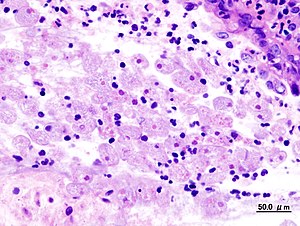A simple blood test will soon predict six years before any symptoms appear whether you are at risk of developing Alzheimer’s — a neurodegenerative disease which causes memory loss among older people.
The most disturbing feature of the disease is the difficulty in determining whether mild memory loss is the beginning of Alzheimer’s or just part of normal ageing.
Scientists from the Stanford University School of Medicine in California now say that the blood test, with over 90% accuracy, will greatly help in the disease’s early diagnosis, thereby improving chances of slowing down its progress in the patient. This discovery on how to predict the old man’s disease proves to be of prime importance for India where by 2050, the average Indian might live from the current 64.7 years to 75.6 years.
According to the 2006 World Population Prospects, by the UN Department of Economic and Social Affairs, by 2050, the number of Indians aged above 80 will increase more than six times from the current number of 78 lakh to nearly 5.14 crore. At present, 20% of this category in India suffers from Alzheimer’s.
The number of people over 65 years of age in the country is expected to quadruple from 6.4 crore in 2005 to 23.9 crore, while those aged 60 and above will increase from 8.4 crore to 33.5 crore in the next 43 years. According to one estimate, Alzheimer’s kills one out of four Indians over the age of 80.
The early stage of Alzheimer’s is often overlooked and incorrectly labelled as normal old age outcomes.
The blood test identifies changes in a handful of proteins in blood plasma that cells use to convey messages to one another. The research team discovered a connection between shifts in the cells dialogue and the changes in the brain accompanying Alzheimer’s.
Dr Anshu Rohatgi, neurologist at Sir Ganga Ram Hospital, said, “This is a huge breakthrough with enormous potential. It will be a valuable tool in the detection of early-stage mild cognitive impairment (MCI). We are now trying to see whether drugs meant for Alzheimer’s can retard or slow down the progress of the disease, when it is administered at the early state of MCI. This blood test will tell us when that early stage is approaching.”
“Just as a psychiatrist can conclude a lot of things by listening to the words of a patient, so by listening to different proteins we are measuring whether something is going wrong in the cells,” said Tony Wyss-Coray, professor of neurology and senior author of the study.
Currently, the clinical diagnosis for Alzheimer’s is one of exclusion — by testing for other causes of memory loss and cognitive decline, such as stroke, tumours and alcoholism.
If those conditions are eliminated as causes of memory loss, what remains is Alzheimer’s — a disease which robs patients of memory, thinking and the ability to communicate.
Source:The Times Of India































